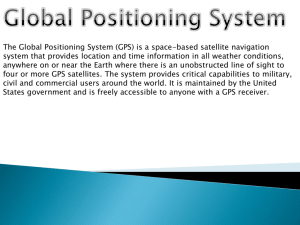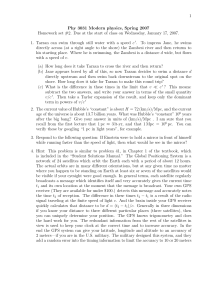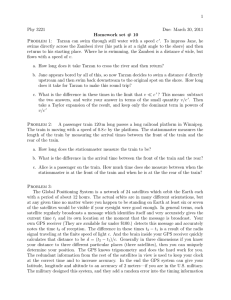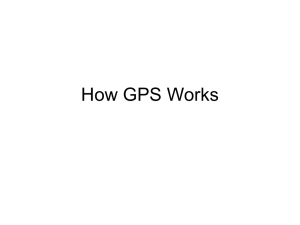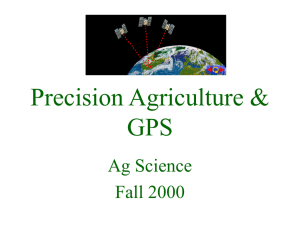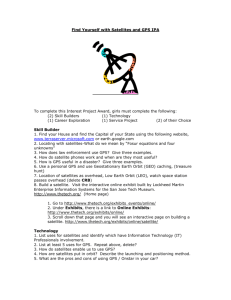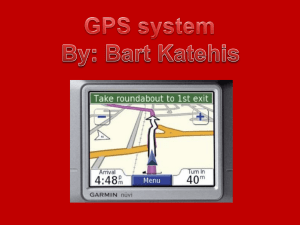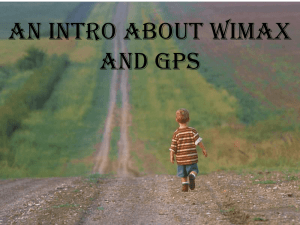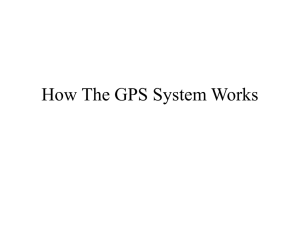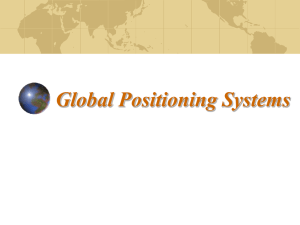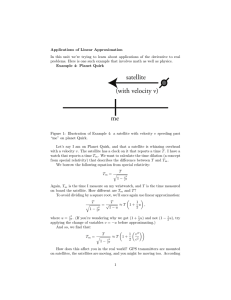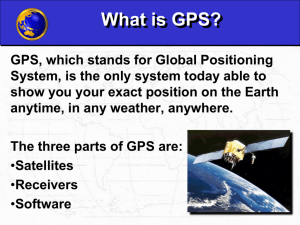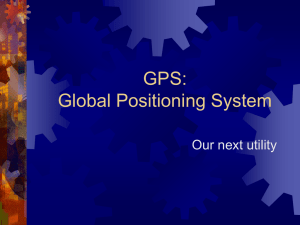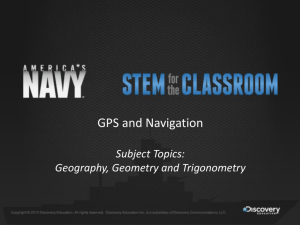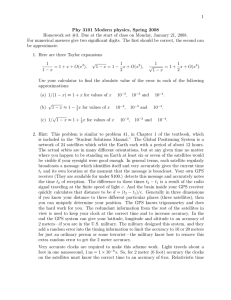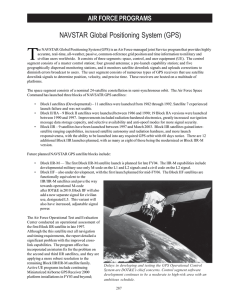GPS Handout - UMaine ECE Department
advertisement
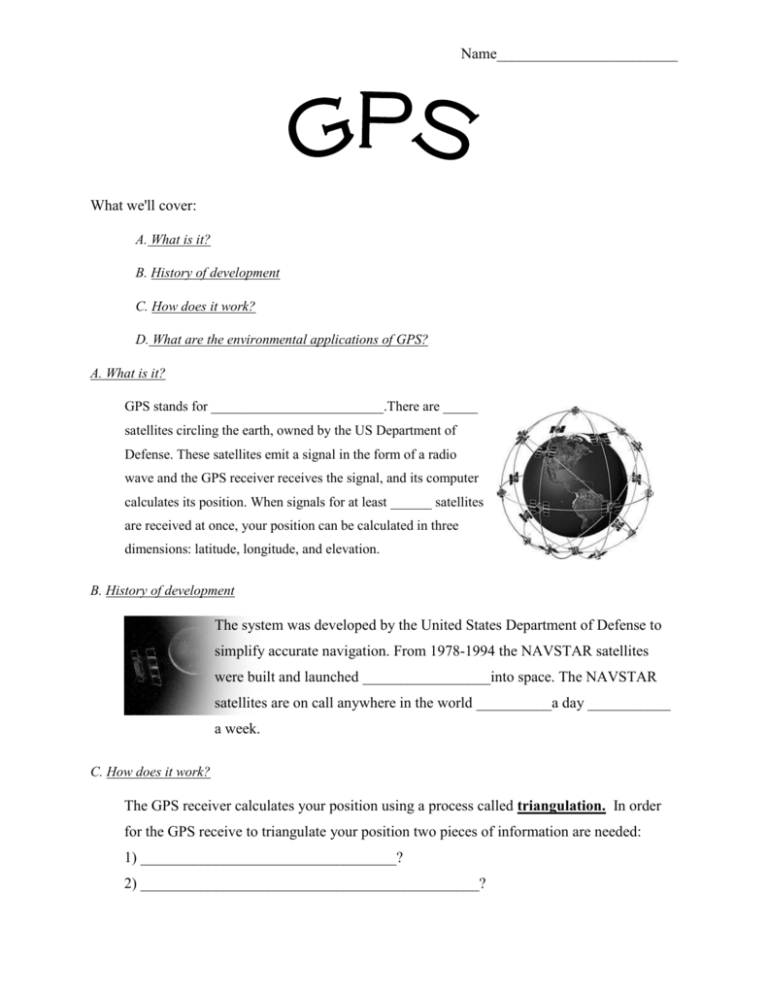
Name________________________ What we'll cover: A. What is it? B. History of development C. How does it work? D. What are the environmental applications of GPS? A. What is it? GPS stands for _________________________.There are _____ satellites circling the earth, owned by the US Department of Defense. These satellites emit a signal in the form of a radio wave and the GPS receiver receives the signal, and its computer calculates its position. When signals for at least ______ satellites are received at once, your position can be calculated in three dimensions: latitude, longitude, and elevation. B. History of development The system was developed by the United States Department of Defense to simplify accurate navigation. From 1978-1994 the NAVSTAR satellites were built and launched _________________into space. The NAVSTAR satellites are on call anywhere in the world __________a day ___________ a week. C. How does it work? The GPS receiver calculates your position using a process called triangulation. In order for the GPS receive to triangulate your position two pieces of information are needed: 1) __________________________________? 2) _____________________________________________? Name________________________ So how can the distance from you to the NAVSTAR satellites be measured? The formula for distance is: ___________________________________________ The velocity of the waves that the satellites emit is _____________________________. This also known as the __________________________!!!! Precise clocks are used in the receivers and the satellites and they both generate the same code at the same time. Now, because it takes awhile for the signal to travel through space from the satellite to you, when you compare the code being received from the satellite with the same code being generated by the receiver, at the same time, they do not match. The differences in these codes tell us the travel time. Since we already know the velocity, the distance can be calculated. Lets see how long it might take for a signal to reach earth. D. Accuracy of GPS There are a number of reasons why GPS isn't more accurate. For instance, the radio signal sent from the satellite can bounce off other objects on its way to you, and therefore the timing is thrown off. But the biggest reason is something called ____________________________. Selective availability: In the past the US Department of Defense created clock errors in the satellite clocks in order to reduce the user’s ability to collect accurate position data. This reduced the accuracy of the GPS to 100 meters. Now however the government has allowed accuracy to reach _________________. E. What are the environmental applications of GPS? ________________________________________________________________________________ ________________________________________________________________________________ ________________________________________________________________________________ ________________________________________________________________________________ Ref- http://ripley.wo.sbc.edu/departmental/geo/global.htm , http://www.garmin.com/aboutGPS/, http://gps.faa.gov/Library/waas-f-text.htm




